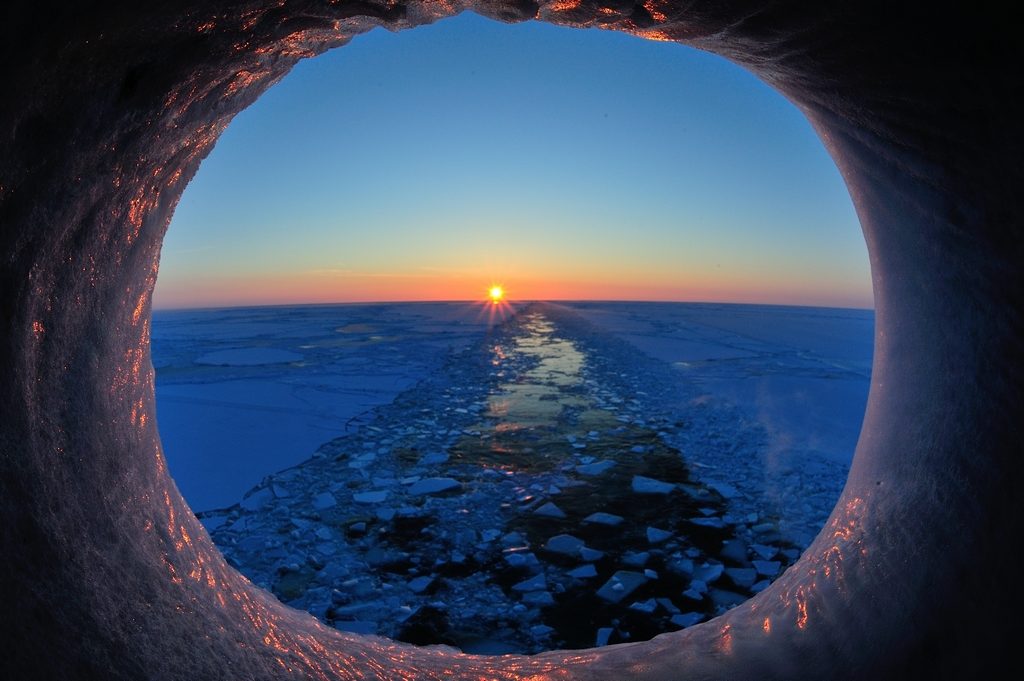News review of the events on the NSR
#2 October 2019

1. Japan plans to build its own icebreaker for the Arctic
The Japanese government plans to build an icebreaker to ensure the safe navigation of its vessels in the Arctic. It is reported that special radars will be installed on the vessel to monitor water surface and measure ice thickness. Based on their data and satellites, the icebreaker will be able to create the most optimal and safe route for commercial ships with minimal fuel costs. About $ 6 million has been allocated from the state budget of Japan to create such a monitoring system. It is planned to build such icebreaker by the end of 2020.
2. Russia builds dozens of new weather stations on the Northern Sea Route
To ensure the safety of navigation along the Northern Sea Route, Russian Federal Agency “Roshydromet” plans to expand the network of weather stations there. According to the head of the Agency, Igor Shumakov, a new network of hydrometeorological stations will appear across the Northern Sea Route, from Vladivostok to Murmansk, which will ensure safety of all ships. He specified that the network should be deployed in 2020 and it will include dozens of new stations. According to Shumakov, increasing the density of the state observing network is necessary in order to improve weather forecasts.
3. Russian authorities raise the bar for transportations along the Northern Sea Route
Ministry for the Development of the Russian Far East sets the goal of achieving 120 million tons of cargo annually along the Northern Sea Route in 15 years. Half of this amount will be shipped via Murmansk. The construction of a year-round transshipment hub begins in the ice-free Kola Bay.
To achieve such results, the Russian government intends to provide tax benefits and preferences, (primarily for oil industry) to companies operating in the Arctic zone. It is about billions of rubles.
Earlier, Russian President Vladimir Putin set the task of ensuring cargo transportation along the NSR at the level of 80 thousand tons in four years.
4. Decommissioned nuclear icebreaker temporarily returned to Murmansk
The nuclear “icebreaker” Sibir, that many years ago was removed from the Russian icebreaking fleet, left “Nerpa” shipyard in the Murmansk Region and returned to the Atomflot enterprise’s Murmansk base.
During 2017, the shipyard performed work on the dismantling of a nuclear installation and unloading of other equipment. Later decontamination of ship premises was carried out. The next step should be cutting the body of the nuclear ship. It has not been reported yet, who will deal with this after the denial of “Nerpa”.
Recall, in return for the decommissioned nuclear ship, the construction of icebreaker of the same name under the new project continues in St. Petersburg.
5. Russian pilot ships for the Arctic
Two pilot vessels of BLV03 project were laid at Zelenodolsk Plant named after A.M. Gorky.
Vessels will have to correspond to ice class Ice3, have good seaworthiness, increased stability, and high maneuverability. The cost of construction will be more than a million rubles.
Hydrographic Enterprise will use them for setting up and servicing navigation equipment and other works as part of hydrographic support for commercial shipping in the waters of the Northern Sea Route.
Pilot ships named after the academicians of transport “Alexander Parfenov” and “Vsevolod Peresypkin”.
